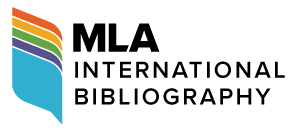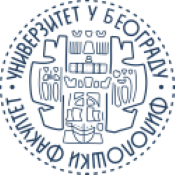The Useful Structure of the Semantic Field as a Lexical Supraunit (Examples of Common Nouns That Designate the Human Body)
DOI:
https://doi.org/10.18485/beoiber.2018.2.1.1Abstract
Dictionaries transmit lexical information by means of words in units. In semasiological dictionaries, each entry communicates one or more meanings. Dictionaries that present words in semantic fields, called thesauri, are far less common.Reference is made to three lexicologists who have published works containing 1,000 or more semantic fields in which the voices and expressions of a language have been collected – Peter Roget for English, and Eduardo Benot and Julio Casares for Spanish. The lexical suprasegments of these dictionaries have been and continue to be useful for many users, with their shortcomings as well as their advantages.This article’s focus seeks to expound upon the design and the principles that inspired me as the author of Diccionario Ideológico – Atlas Léxico de la Lengua Española. Specifically, I elaborate on the useful arrangements of the semantic fields that were entirely organized with the ease and utility of the reader in mind.I proposed improvements – about which I still don't know whether they were correct or not – such as a greater uniformity in the selection of fields, a categorization that includes voices that, like the branches of a tree, depend on each other and a system of characterization and classification that would make it easier to identify the meaning of words by the place they occupy in the design of the semantic field.To exemplify these techniques, we will use the semantic field of those common nouns that designate the human body, such as man, woman, child, old man, and which consist of some seven hundred words.The article breaks down procedures to facilitate the location, identification, and meaning of words and expressions. The ultimate goal of the Atlas léxico is for the user to find previously unknown words when searching for a better and more accurate use of the rich lexicon.Key words: onomasiology, thesaurus, semantic fields, hyperonym, holonym.References
Benot, Eduardo. Diccionario de ideas afines y elementos de tecnología compuesto por una Sociedad de Literatos bajo la dirección de D.E.B. Madrid: Imprenta de M. Núñez, 1899. Impreso.
Casares, Julio. Diccionario ideológico de la Lengua Española. Barcelona: Gustavo Gili, 1942. Impreso.
Corripio, Fernando. Diccionario de ideas afines. Barcelona: Herder, 1985. Impreso.
Moliner, María. Diccionario de uso de la lengua española. Madrid: Gredos, 1966‒67. Impreso.
Moral, Rafael del. Diccionario temático del español. Madrid: Verbum, 1999. Impreso.
—. «Principios para un diccionario conceptual y sistemático de la lengua española». Actas del XXXV Simposio Internacional de la Sociedad Española de Lingüística, León: Servicio de publicaciones de la Universidad, 2006: 1314–1330. Web.
—. Diccionario ideológico. Atlas léxico de la lengua española. Barcelona: Herder, 2009. Impreso.
Moreno, María Águeda. «El diccionario ideológico general del español». Revista Alfinge, 24 (2012): 129–154. Web.
Roget, Peter Mark. Thesaurus of English Words and Phrases. London, 1852. Print.
Casares, Julio. Diccionario ideológico de la Lengua Española. Barcelona: Gustavo Gili, 1942. Impreso.
Corripio, Fernando. Diccionario de ideas afines. Barcelona: Herder, 1985. Impreso.
Moliner, María. Diccionario de uso de la lengua española. Madrid: Gredos, 1966‒67. Impreso.
Moral, Rafael del. Diccionario temático del español. Madrid: Verbum, 1999. Impreso.
—. «Principios para un diccionario conceptual y sistemático de la lengua española». Actas del XXXV Simposio Internacional de la Sociedad Española de Lingüística, León: Servicio de publicaciones de la Universidad, 2006: 1314–1330. Web.
—. Diccionario ideológico. Atlas léxico de la lengua española. Barcelona: Herder, 2009. Impreso.
Moreno, María Águeda. «El diccionario ideológico general del español». Revista Alfinge, 24 (2012): 129–154. Web.
Roget, Peter Mark. Thesaurus of English Words and Phrases. London, 1852. Print.
Downloads
Published
2018-05-29
How to Cite
Moral Aguilera, R. del. “The Useful Structure of the Semantic Field As a Lexical Supraunit (Examples of Common Nouns That Designate the Human Body)”. BEOIBERÍSTICA - Journal of Iberian, Latin American and Comparative Studies (ISSN: 2560-4163 Online), vol. 2, no. 1, May 2018, pp. 13-25, doi:10.18485/beoiber.2018.2.1.1.
Issue
Section
LINGUISTICS
License
Authors who publish with this journal agree to the following terms:
- Authors retain copyright and grant the journal right of first publication with the work simultaneously licensed under a Creative Commons Attribution-ShareAlike 4.0 International License that allows others to share the work with an acknowledgement of the work's authorship and initial publication in this journal.
- Authors are able to enter into separate, additional contractual arrangements for the non-exclusive distribution of the journal's published version of the work (e.g., post it to an institutional repository or publish it in a book), with an acknowledgement of its initial publication in this journal.
- Authors are permitted and encouraged to post their work online (e.g., in institutional repositories or on their website) prior to and during the submission process, as it can lead to productive exchanges, as well as earlier and greater citation of published work (See The Effect of Open Access).













